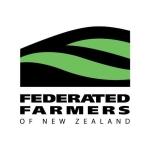Food is the new black as commodities rise
While appreciating commodity prices will be positive for the New Zealand economy, it is only part of the cost equation for goods for all farmers, whether you’re producing cheese or lamb.
“Global commodity prices are up. Whole Milk Powder (WMP) prices have doubled in the last 12 months, and butter is at 20 year highs because of constrained supply,” says Lachlan McKenzie, Federated Farmers Dairy chairperson.
“Wool and meat are also showing positive signs and the positive economic contribution of agriculture is benefiting every New Zealander, every day.
“These are sustainable prices because food is the new black. About 70 million people join the human race each year as the global population heads towards 6.9 billion.
“We are seeing strong price signals from the ANZ Commodity Price Index and from Fonterra’s GlobalDairyTrade auction yesterday. Food is no longer a plentiful low cost good but is now starting to reflect the real cost of production and its scarcity.
“New Zealand may be the world’s largest exporter of lamb but we are far from the largest producer. We may be the second largest dairy exporter on earth, but produce less than two percent of the world’s milk supply.
“Yet the legacy of drought will hang over the New Zealand agricultural sector for months to come. While rain has come to many parts, many farmers cannot make up for lost time or for feed that hasn’t grown.
“So while International prices are up, world production has been constrained. It’s why dairy farmers need to factor in volatility to the tune of $2 per kilogram of milk solids (kg/MS) as part of their business plans to be safe.
“Federated Farmers advice is for dairy farmers to bank any gain while maintaining conservative budgets. We further hope the trading banks to work with farmers understanding this volatility and potential.
“Yet with the positive real growth in the value of food exports, I know some may link this to the price they pay in supermarkets.
“Commodity prices are only a part of the price equation consumers need to know.
“Farmers don’t get the retail shelf price. We have to meet the full cost of production and input costs are up. Last year dairy famers had on average only 70 cents profit out of the $6.10 milk price left over for debt, taxes and in dividends.
“It’s the compliance costs we have the least control over. In the past year we’ve had increases in local authority rates, ACC levies and particularly the impact of the Emissions Trading Scheme (ETS) on fuel and electricity.
“Dairy farmers in particular have greater environmental expectations upon them and we have to be in the black to be green,” Mr McKenzie concluded.
